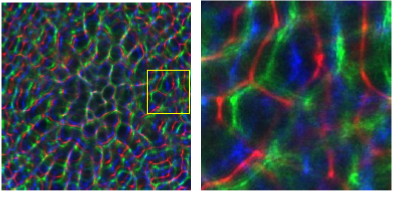Large dynamic range autorefraction with a low-cost diffuser wavefront sensor
McKay GN, Mahmood F, Durr NJ
Biomedical Optics Express, 10:4 2019
Abstract
Wavefront sensing with a thin diffuser has emerged as a potential low-cost alternative to a lenslet array for aberrometry. Diffuser wavefront sensors (DWS) have previously relied on tracking speckle displacement and consequently require coherent illumination. Here we show that displacement of caustic patterns can be tracked for estimating wavefront gradient, enabling the use of incoherent light sources and large dynamic-range wavefront measurements. We compare the precision of a DWS to a Shack-Hartmann wavefront sensor (SHWS) when using coherent, partially coherent, and incoherent illumination, in the application of autorefraction. We induce spherical and cylindrical errors in a model eye and use a multi-level Demon’s non-rigid registration algorithm to estimate caustic displacements relative to an emmetropic model eye. When compared to spherical error measurements with the SHWS using partially coherent illumination, the DWS demonstrates a ∼5-fold improvement in dynamic range (-4.0 to +4.5 D vs. -22.0 to +19.5 D) with less than half the reduction in resolution (0.072 vs. 0.116 D), enabling a ∼3-fold increase in the number of resolvable prescriptions (118 vs. 358). In addition to being 40x lower-cost, the unique, non-periodic nature of the caustic pattern formed by a diffuser enables a larger dynamic range of aberration measurements compared to a lenslet array.
